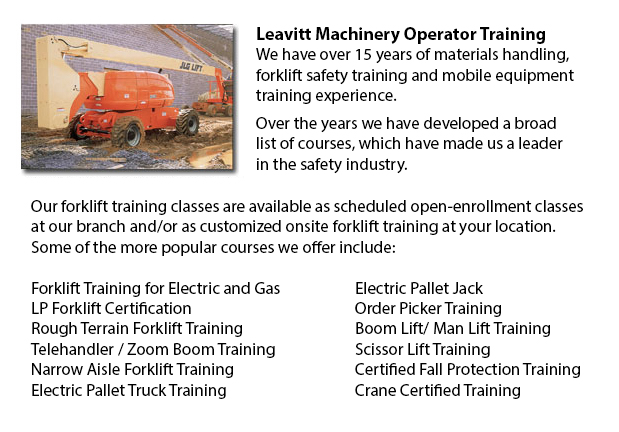
Kitchener Aerial Platform Training - Aerial platform lifts are able to accommodate numerous tasks involving high and tough reaching spaces. Often used to perform daily repair in structures with tall ceilings, prune tree branches, elevate heavy shelving units or mend phone lines. A ladder could also be used for many of the aforementioned projects, although aerial platform lifts offer more security and stability when correctly used.
There are many designs of aerial lifts available on the market depending on what the task required involves. Painters sometimes use scissor aerial lifts for instance, which are categorized as mobile scaffolding, useful in painting trim and reaching the 2nd story and higher on buildings. The scissor aerial hoists use criss-cross braces to stretch and enlarge upwards. There is a table attached to the top of the braces that rises simultaneously as the criss-cross braces elevate.
Cherry pickers and bucket lift trucks are another kind of the aerial lift. Typically, they contain a bucket at the end of an extended arm and as the arm unfolds, the attached bucket lift rises. Lift trucks use a pronged arm that rises upwards as the handle is moved. Boom hoists have a hydraulic arm that extends outward and raises the platform. Every one of these aerial lift trucks require special training to operate.
Through the Occupational Safety & Health Association, also called OSHA, training programs are offered to help ensure the employees satisfy occupational values for safety, system operation, inspection and repair and machine load capacities. Workers receive certification upon completion of the course and only OSHA qualified employees should operate aerial lifts. The Occupational Safety & Health Organization has established guidelines to maintain safety and prevent injury while utilizing aerial lift trucks. Common sense rules such as not using this piece of equipment to give rides and making sure all tires on aerial hoists are braced so as to hinder machine tipping are noted within the guidelines.
Sadly, figures reveal that greater than 20 aerial lift operators die each year while operating and almost ten percent of those are commercial painters. The bulk of these accidents were triggered by inappropriate tie bracing, hence many of these might have been prevented. Operators should ensure that all wheels are locked and braces as a critical security precaution to stop the instrument from toppling over.
Marking the encompassing area with visible markers have to be used to safeguard would-be passers-by in order that they do not come near the lift. In addition, markings must be placed at about 10 feet of clearance between any utility lines and the aerial lift. Lift operators must at all times be appropriately harnessed to the lift while up in the air.
-
Kitchener Forklift Training Schools
Kitchener Forklift Training Schools - The Advantages Of Taking One Of Our Forklift Training Schools Are you searching for work as a driver of a forklift? Our regulatory-compliant mobile equipment operator training offers instruction in types of fo... More -
Kitchener Overhead Crane Operator Training
Kitchener Overhead Crane Operator Training - Our overhead crane operator training course is designed to teach employees the basics of overhead crane/sling operation and pre-shift checks. Courses are taught by our expert trainers and consultants. Well... More -
Kitchener Crane Training School
Kitchener Crane Training School - The crane training school offers industry-relevant programs. Courses provide trainees with learning outcomes which match present industry demands. Our small class sizes combine hands-on experience and theory. Our qua... More -
Kitchener Skid Steer Ticket
Kitchener Skid Steer Ticket - The lift arms on the skid-steer loader are located at the side of the driver along with pivots behind the driver's shoulders. These features makes the skid-steer loader different as opposed to the conventional front load... More -
Kitchener Manlift Operator Certification
Kitchener Manlift Operator Certification - Our scissor platform and aerial lift training and certification empowers participants with a knowledge and general understanding of the efficient and safe use of "Power Operated Mobile Work Platforms," under... More -
Kitchener Crane Safety Training
Kitchener Crane Safety Training - Companies and crane operators have to be aware of the problems related to crane safety. Legislation provides rules for the safe operation, inspection and maintenance of lifting machines all around North America. Cran... More -
Kitchener Forklift Training Programs
Kitchener Forklift Training Programs - Are you searching for work as a forklift driver? Our regulatory-compliant mobile equipment operator training offers instruction in kinds of forklifts, pre-shift check, fuel kinds and dealing with fuels, and safe... More -
Telehandler Training in Kitchener
Telescopic handlers often known as telehandlers for short, are an extremely popular piece of heavy construction machinery. They are commonly used in the construction and agricultural industries. These equipments have extreme reaching ability and can... More

Forklift Certification Kitchener
TOLL FREE: 1-888-254-6157
Kitchener, Ontario
forkliftcertificationkitchener.com
Email Us
About Us


